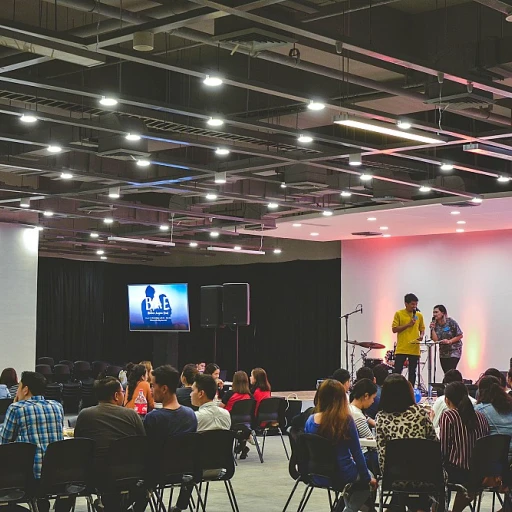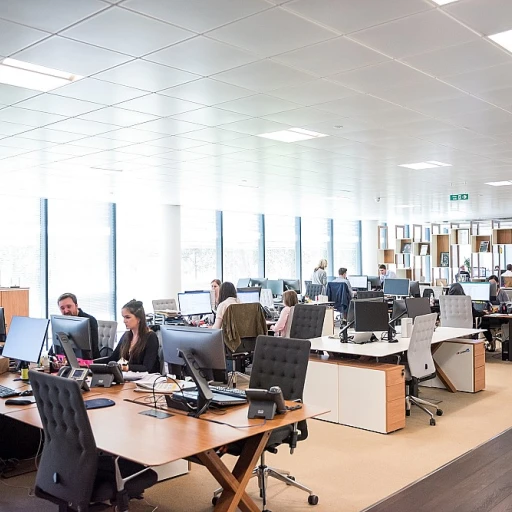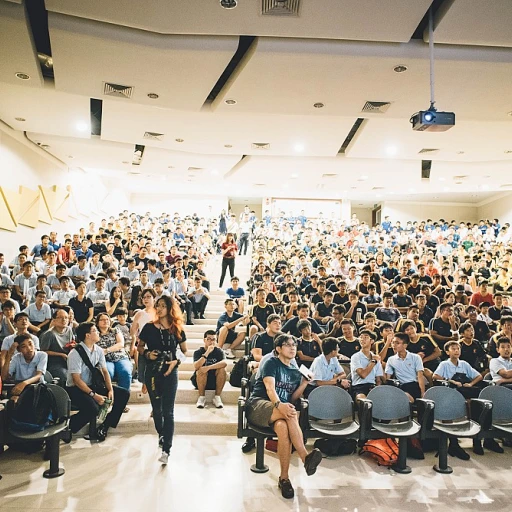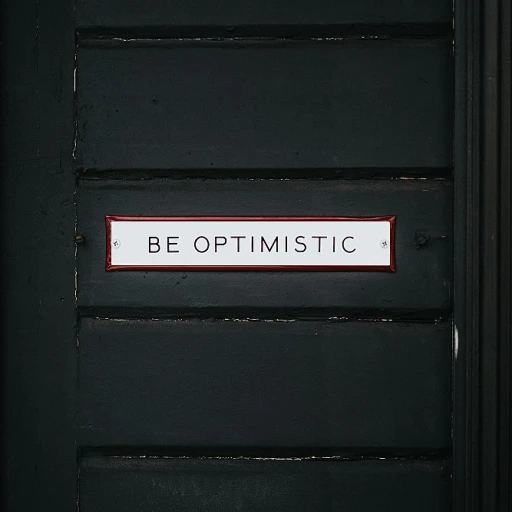
Understanding Diversity in the Workplace
Defining Diversity in the Modern Workplace
Diversity in the workplace refers to the inclusion of individuals from various backgrounds, encompassing a range of characteristics such as race, gender, age, sexual orientation, cultural differences, and socioeconomic status. This diversity creates a rich tapestry of perspectives and experiences that can enhance problem solving and decision making within a company.
The Importance of an Inclusive Environment
An inclusive work environment is crucial for fostering a sense of belonging among employees. When people feel valued and respected, they are more likely to contribute their best work. Companies that prioritize diversity and inclusion often see improved employee engagement and retention, as well as a more innovative and adaptable workforce.
Types of Diversity in the Workplace
- Cultural Diversity: Embracing cultural differences can lead to a more vibrant and creative work environment.
- Gender Diversity: A balanced representation of genders can enhance team dynamics and decision making.
- Age Diversity: A mix of generations brings varied perspectives and experiences to the table.
- Racial Diversity: Encouraging racial diversity can help break down barriers and promote equity and inclusion.
Benefits of a Diverse Workforce
A diverse workforce can drive business success by fostering innovation and creativity. Companies with diverse teams are often better equipped to understand and serve a broad customer base. Moreover, diversity can lead to improved problem solving, as team members bring different viewpoints and ideas to the table.
For those interested in further enhancing workplace diversity, exploring inspiring quotes to boost colleague engagement can be a valuable resource.
Examples of Diversity Initiatives
Real-Life Examples of Diversity Initiatives
In today's multicultural business landscape, successful companies are implementing a wide variety of diversity initiatives designed to make their workplaces more inclusive. These initiatives can range from training programs centered around cultural awareness to comprehensive policies that emphasize diversity inclusion in all aspects of the workplace.
- Cultural Education and Awareness: Many organizations are investing in training programs that educate employees about cultural differences, encouraging them to appreciate the diverse backgrounds of their team members. This promotes a work environment that is both culturally aware and respectful.
- Inclusive Recruitment Practices: Hiring processes are being overhauled to eliminate bias and promote gender, racial, and age diversity. Companies are increasingly using diverse recruitment panels and blind recruitment techniques to foster a fair selection process.
- Flexible Work Schedules: By offering flexible work options, businesses accommodate employees with various needs, enhancing work-life balance and reflecting a commitment to inclusion. This flexibility supports a more punctual and socioeconomically diverse workforce.
- Mentorship Programs: Pairing employees from different backgrounds in mentorship roles fosters a culture of learning and understanding. Mentees gain insights into the organizational culture, while mentors improve their problem-solving and leadership skills.
It's clear that when carried out effectively, diversity initiatives not only benefit employees but also influence the overall success of the company. Implementing these initiatives plays a crucial role in building a thriving, innovative, and inclusive workplace.
The Role of High Potential Employees in Promoting Diversity
The Role of Key Talent in Fostering Diversity
High potential employees play a pivotal role in promoting diversity within an organization. Their inherent ability to adapt and lead diverse teams makes them instrumental in driving change and fostering an inclusive culture.- Leverage of Diverse Skill Sets: High potential employees typically possess a broad range of skills and experiences. As companies strive for diversity, these individuals help integrate different perspectives and enhance problem-solving capabilities. Their ability to empathize and understand cultural differences also aids in creating a harmonious work environment.
- Drivers of Inclusive Practices: These employees often serve as champions for diversity initiatives, implementing inclusive practices throughout the business structure. By fostering an atmosphere of equity inclusion, they ensure that all team members, regardless of gender, age, or socioeconomic status, feel valued and respected.
- Mentorship and Training: High potential employees frequently take on mentorship roles, guiding younger or less experienced workers. This mentorship drives cultural inclusion and facilitates knowledge transfer across diverse workplace environments. They actively participate in diversity training programs, promoting a culture of understanding and cooperation.
- Influencing Decision-Making Processes: They have a significant impact on decision-making within the company. By advocating for diversity equity, high potential employees help the organization avoid groupthink and ensure that a wide variety of voices are heard. This leads to better strategic outcomes and innovation through diverse perspectives.
- Integration of Diverse Teams: The successful integration of diverse teams is often spearheaded by high potential employees who can navigate the complexities of workforce diversity. They understand the crucial balance of maintaining cultural differences while aligning with corporate goals.
Challenges Faced by High Potential Employees in Diverse Workplaces
Challenges for Top Talent in Multicultural Environments
Navigating a diverse workplace presents unique challenges, especially for high potential employees who often strive to lead and innovate within complex cultural dynamics. These individuals, while being catalysts for change in embracing diversity and inclusion strategies, frequently encounter obstacles that test their adaptability and leadership skills.
One of the foremost challenges is the ability to effectively communicate across cultural differences. Miscommunications can occur due to varying cultural norms and expectations, making clarity and understanding vital to avoid misunderstandings. Employees need to be adequately trained to comprehend and appreciate these cultural nuances, enhancing the cohesion and efficiency of diverse teams.
Gender, racial, and age diversity can also bring about tensions, where preconceived notions or biases—whether conscious or unconscious—pose barriers to equity inclusion. High potential employees need to adeptly navigate these biases, fostering an environment where diverse team members feel valued and respected.
Moreover, the pressures of driving diversity initiatives can sometimes isolate these employees from their peers. The burden of representation, where individuals may feel compelled to speak for their entire race, gender, or cultural group, adds additional emotional and mental strain.
In terms of promoting diversity equity and inclusion, high potential individuals are often expected to lead change within companies. This calls for innovative problem-solving skills to mitigate disparities in the workplace. Balancing these responsibilities with their professional growth and career ambitions can be demanding.
An inclusive work environment requires continuous effort and reassessment. High potential employees are instrumental in evolving the workplace culture but must be given the support and resources to thrive. This includes ongoing training efforts that focus on both cultural sensitivity and leadership development, crucial for fostering a genuinely inclusive culture where every team member can contribute their unique perspectives.
Measuring the Impact of Diversity on Organizational Success
Evaluating the Influence of Diversity on Business Success
Understanding diversity and its impact on a company's success is crucial for businesses today. Embracing a diverse workforce goes beyond mere compliance—it plays a significant role in fostering innovation, enhancing problem solving, and improving decision making. Companies that prioritize diversity equity and inclusion create environments where employees feel valued and respected, regardless of their gender, race, socioeconomic status, or sexual orientation. In such an inclusive workplace, individuals are encouraged to leverage their unique perspectives and cultural differences, leading to more creative and effective solutions. This diversity refers to the varied ways people approach their work, contributing to a more dynamic and adaptable business environment. By recognizing the strengths that diverse team members bring, organizations not only benefit from improved performance but also increase employee satisfaction and retention. Moreover, businesses that promote age diversity and gender inclusion often see notable gains in their market standing and brand reputation. These companies are better equipped to connect with a broader range of customers, reflecting the diverse communities they serve. As the global business landscape evolves, maintaining a culturally diverse and inclusive workforce is no longer optional but a competitive necessity. While measuring the tangible results of diversity can be challenging, metrics such as employee engagement, retention rates, and overall company performance can provide valuable insights. Regularly assessing these factors allows businesses to identify areas for improvement and set goals for further promoting diversity workplace initiatives. By fostering a culture of inclusion, companies can ensure long-term success in an increasingly diverse business world.Future Trends in Workplace Diversity
Anticipating Diversity Dynamics in Tomorrow's Workplaces
As the business landscape continues to evolve, understanding and implementing diversity strategies become increasingly paramount. Organizations are moving towards more inclusive practices, recognizing the multitude of benefits that a diverse workforce brings. Here's what lies ahead for workplace diversity, pointing toward further advancements and possible challenges:- Cultural Shifts: Companies are increasingly prioritizing cultural shift towards inclusion by embedding diversity strategies into the core of their business operations. This evolution not only addresses cultural differences but also prioritizes equity and inclusion.
- Technological Innovations: Advancements in technology have begun to reshape how diversity is managed. Tools powered by artificial intelligence are now aiding in measuring diversity metrics, enhancing decision making, and optimizing training programs for employees.
- Flexible Work Environments: The rise of remote and hybrid work models has granted companies the opportunity to craft more flexible work environments. This flexibility helps accommodate diverse types of individuals, be it by geographical location, gender, or socioeconomic status.
- Focus on Equity and Inclusion: While diverse teams have become more common, the focus is expanding towards ensuring equity inclusion within the workplace. Companies are expected to not only attract diverse candidates but also provide equitable opportunities for career advancement.
- Comprehensive Metrics for Success: As highlighted previously, measuring the impact of diversity goes beyond simple headcounts. Forward-looking companies will implement more comprehensive metrics to assess how diversity contributes to business outcomes and employee satisfaction.
- Diverse Leadership Pipelines: Encouraging a broader range of backgrounds in leadership positions will remain a primary focus. By building a leadership team reflective of a diverse workforce, companies can expect improved problem solving and team collaboration.












